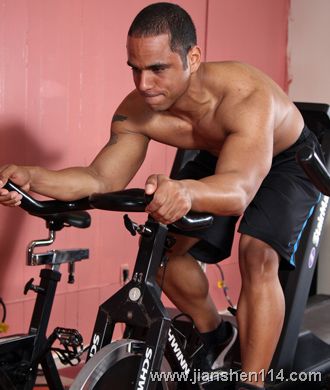Every fitness person must have felt it. If the exercise is correct, you will continue to feel it in the future. This is muscle soreness. “No pain, no muscle†seems to have become a law of fitness. As long as it is not the pain caused by ligament tearing, bone breakage, but muscle soreness caused by fitness, it is a good thing, because it means that the muscles get enough exercise, so they need to repair themselves to achieve a stronger state. However, even if it is a good thing, if it is too painful, it may affect your daily work, study or life. So, how to deal with this kind of soreness is the most ideal? The fitness expert gives the corresponding answer. Common treatment The muscle soreness that occurs 12 to 48 hours after fitness is the so-called "Delayed onset muscle soreness (DOMS)". This is due to the slight tearing of muscle tissue due to exercise, and the soreness is the signal that the body's repair work is underway, so it is best to rest for a few days. Through soreness, the body can inform the brain when it is suitable for exercise and when it should rest. Methods for treating muscle soreness include analgesics, slight stretching, massage, hot water baths, and hot and cold packs. The role of the drug is well known, and the slight stretch is effective because the muscle tends to tighten in the recovery state, which can make the sore worse, so the slow and gentle stretching action can relieve the tension and relieve the pain. Massaged sore muscles can also help reduce muscle tension, increase blood circulation, speed recovery, and shorten DOMS time. The hot water bath, like the massage, relaxes the muscles and speeds up the circulation. The smoother the blood flow, the more oxygen and nutrients are fed into the tissue, which repairs the damaged muscles faster. Cold and hot compress will also be effective, as the name suggests, apply an ice pack to the sore for 15 minutes, then use a hot bag for another 15 minutes, then apply ice again, and continue to circulate. Scientific research has found that changes in hot and cold temperatures have a great effect on accelerating blood circulation and muscle recovery. Timely vitamin supplement During exercise, the body's energy consumption increases, accelerating the metabolic process, and the activity of various enzymes increases, resulting in a corresponding increase in vitamin consumption. At the same time, sweating during exercise makes the loss of water-soluble vitamins serious. In addition, muscle growth requires a large amount of protein, and vitamins are a catalyst for muscle growth, which protects, repairs and promotes growth of muscle tissue. In the absence of vitamins and minerals, muscle growth not only slows or blocks, but also increases the chance of sports injuries. But many people just add vitamins indiscriminately, or take care of them. In fact, different vitamins do not work the same in sports and after exercise. Vitamin C participates in the biological oxidation process of muscle tissue, promotes substance metabolism, etc., and plays an important role in improving the body's exercise capacity. In addition, vitamin C is not only the main component of the lubricating fluid connecting the tissues, but also protects the cells from damage and aging. Daily requirements: The minimum amount is 90 mg, and the maximum amount of exercise can exceed 2000 mg. Divided into 2 to 3 intakes. Sources of intake: citrus fruits and juices, green peppers, red peppers, kale, peaches and kiwis. Like vitamin C, vitamin E is also an antioxidant that resists the side effects of free radicals. Practice and research have found that taking vitamin E after exercise helps to alleviate muscle soreness. Daily demand: 400 to 800 international units. Sources of ingestion: nuts, seeds, dark green vegetables, rapeseed oil, whole grains. Vitamin B6 helps protein metabolism and hemoglobin formation, and more importantly, promotes the production of red blood cells. Muscles require oxygen during exercise and metabolism. Red blood cells are transporting oxygen. The more blood red blood cells are, the stronger the oxygen carrying capacity is, and the more oxygen is supplied to the muscles, thus reducing the load on the heart. On the contrary, the pressure on the heart is great. Daily requirement: 1.3 to 2 mg. Sources of ingestion: fish, beans, potatoes, bananas, chicken, turkey. Vitamin B1 can promote body metabolism, maintain nervous system function, and reduce fatigue after exercise. A study from the American sports medicine community showed that people who took vitamin B1 after exercise had a 45% lower lactic acid accumulation than those who did not take vitamin B1. Daily requirement: 1.0 to 1.5 mg. Sources of ingestion: animal internal organs, meat, mushrooms, yeast, green garlic, etc. Copier Toner For Ricoh,Newly Compatible Printer Cartridge,Ricoh Mpc2503 Toner,Cheap Ricoh Toner Cartridge jiangmen jinheng office equipment Co. Ltd. , https://www.jmjhtonercartridge.com

